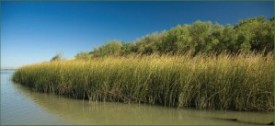In 2010 the Conservation Law Foundation, working in collaboration with local municipalities, the Rhode Island Economic Development Corporation, the Rhode Island Department of Environmental Management, and other Blackstone Valley stakeholders initiated an effort to form the Northern Rhode Island Municipal Energy Collaborative. The purpose of the Collaborative is to explore opportunities to develop renewable energy in Northern Rhode Island for municipal benefit while at the same time protecting important historic, cultural, and ecological values.
One of the first initiatives of the Collaborative was to examine the potential for using existing dams on the Blackstone River to generate renewable energy. Results of preliminary studies indicate that development of hydropower at several of the existing dams could be economically viable.
Ashton Hydro, LLC and Albion Hydro, LLC (formed specifically to advance the vision of the Collaborative) have applied for Preliminary Permits from the Federal Energy Regulatory Commission (FERC) to explore developing hydropower at the Ashton and Albion dams in Lincoln and Cumberland, Rhode Island. Additional information on these filings is provided below.
Over the coming year the Collaborative will be conducting a variety of studies to further assess the feasibility of these projects and explore potential ownership structures that would facilitate hydropower development for public benefit. Depending on the outcome of these studies, the Collaborative will prepare and submit formal development applications to the FERC for their review and approval. Throughout the pre-development process we will look to engage stakeholders and the public in the process.
Our approach to hydropower development is guided by the principles outlined by the Low Impact Hydropower Institute (LIHI). LIHI tests a projects environmental impacts against ten stringent critieria including; water quality, fish passage, instream flows, cultural and historic resources, and others and provides an independent evaluation of individual projects nationally. At this point we anticipate that construction associated with these projects would be confined to the local area around the dams. The projects would be operated as a run-of-river and thus would not change the existing pond levels or river flows in any way. In fact, development of the projects would help to ensure the long-term maintenance of the dams and ponds. We have conducted initial outreach with the local environmental community and are acutely aware of efforts to restore fish passage on the river. Our approach to development will include provisions for both upstream and downstream passage of anadromous fish.
Background on the Collaborative:
Phase I Feasibility Study Materials:
Preliminary Permit Applications:



No Comments
No comments yet.
RSS feed for comments on this post. TrackBack URL
Sorry, the comment form is closed at this time.